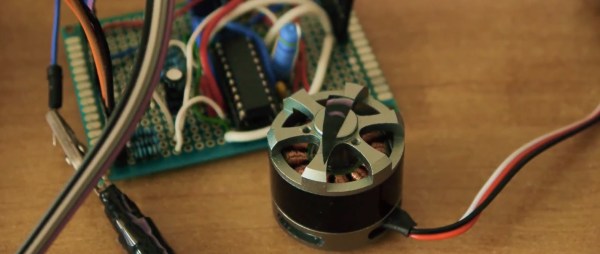We’re hosting one day of hacking in New York City next week. Stretch your skills with the power of deadlines and you can be immortalized in Hackaday history. If that kind of cred doesn’t do it for you, Hackaday is bringing along $1500 in prizes and there’s another $5000 cash prize at stake as well.
Only Hackaday can bring hardware to the TechCrunch NYC Hackathon on May 2nd. We need you to make it happen. Get your free ticket now (UPDATE: Our special tickets are all sold out but you might still be able to get some in the last few ticket releases. Check back often.). From there join the comment thread on our events page to connect with the rest of us who will be there.
Break the Hardware and Software Divide
 Check out these pictures of last year’s TechCrunch hackathon. There’s a ton of people, they all seem to be having fun, but when it comes down to the end, they’re pointing to the screens of their Macbooks. This year you need to break that mold and and rise to the top with a hardware product to hold up as you are awarded TechCrunch’s comically large $5000 check.
Check out these pictures of last year’s TechCrunch hackathon. There’s a ton of people, they all seem to be having fun, but when it comes down to the end, they’re pointing to the screens of their Macbooks. This year you need to break that mold and and rise to the top with a hardware product to hold up as you are awarded TechCrunch’s comically large $5000 check.
Holding a hunk of hardware with electrons running through its veins is way more hardcore than software alone. We will end the segregation of software-only and hardware-only hackathons. After all, most hardware hacks these days are also software hacks. Team up with one of the iOS/Android app groups and add hardware to the mix. We want to see at least twenty of those tables strewn with jumper wires, breakout boards, and soldering irons. And we want to see someone from the Hackaday Community win this thing. So here’s the agreement — we’ll get you in, we’ll bring the hardware, you bring the awesome.
All Work and No Play (yeah right)
Ha! Like that has ever been our mantra. This is going to be a blast and because of it the Hackaday crew is flocking to town from all over the country. Confirmed so far are [Adam], [Alek], [Amar], [Brian], [Chris], [Jasmine], [Matt], [Mike], [Rob], [Sophi], and [Theodora]. We’re there to have fun, and you’re invited.
Most of the crew will arrive in town on Thursday night and we’ll definitely be meeting up. Anyone who registers for the Hackathon is invited for these pre-game festivities. Drop a comment on the events page and we’ll PM you details about where and when. But at the event our collective skills will be available to get your project past the sticking points. Of course we also need many hands to distribute all the swag we’re bringing along.









 A warning is warranted – this is not for the faint of heart. You can easily destroy your microcontroller if you’re not careful. [Ignas] added several current limiting resistors and capacitors as advised in the
A warning is warranted – this is not for the faint of heart. You can easily destroy your microcontroller if you’re not careful. [Ignas] added several current limiting resistors and capacitors as advised in the 








